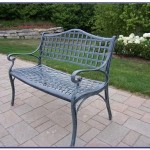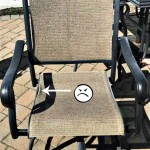The Best Way to Get Rid of Moss Between Patio Bricks
Moss between patio bricks can be an eyesore, detracting from the overall aesthetic appeal of your outdoor space. It can also contribute to uneven surfaces, making it difficult to walk on and potentially leading to tripping hazards. Fortunately, getting rid of moss between patio bricks is achievable and doesn't require extensive effort or expensive products. This article will explore effective methods to control and eliminate moss, ensuring a clean and inviting patio.
1. Understanding the Causes of Moss Growth
Before delving into solutions, it's essential to understand the conditions that promote moss growth. Moss thrives in moist, shady environments with poor drainage. Here's a breakdown of key factors:
- Moisture: Moss requires regular moisture to survive. Excess water buildup between patio bricks, often due to improper drainage, creates a favorable environment for moss growth.
- Shade: Like most plants, moss prefers shady conditions. Areas of your patio that receive limited sunlight are more susceptible to moss invasion.
- Poor Ventilation: Lack of airflow can trap moisture, creating a humid environment that encourages moss proliferation.
By addressing these underlying causes, you can create an environment less hospitable to moss growth. Good drainage, increased sunlight exposure, and improved ventilation will significantly minimize its chances of taking hold.
2. Manual Removal Techniques
Once you've addressed the underlying factors contributing to moss growth, manual removal techniques can effectively eliminate existing moss. Here are two popular methods:
2.a. Using a Stiff Brush
A stiff-bristled brush, such as a wire brush or a scrub brush with a long handle, can efficiently remove moss from between patio bricks. Simply scrub the moss vigorously, ensuring you reach all crevices. This method works best for lighter moss infestations and is particularly effective in removing moss from smooth brick surfaces.
2.b. Employing a Trowel or Spade
For stubborn moss growth or larger areas, a trowel or spade is a more suitable tool. Gently pry the moss off the bricks, working your way through the affected area. This method is more physically demanding but effective in removing deep-rooted moss. Remember to be careful not to damage the surrounding bricks during the process.
3. Chemical Solutions for Moss Control
For widespread moss infestations, chemical solutions can provide a quick and effective solution. These products typically contain active ingredients that kill moss, preventing its re-growth. However, it's crucial to approach chemical solutions with caution, considering their potential environmental impact and safety precautions.
- Iron Sulfate: Commonly known as "moss killer," iron sulfate is a readily available and effective chemical control agent. It works by disrupting the moss's chlorophyll production, leading to its death. Apply a diluted solution of iron sulfate to the affected areas, ensuring it reaches the moss thoroughly. Remember to follow the manufacturer's instructions carefully.
- Vinegar: As a natural alternative, vinegar can be used to control moss growth. Its acidic nature disrupts the moss's cell structure. Apply white vinegar undiluted to the affected area and allow it to sit for several minutes before scrubbing the moss away. While vinegar is non-toxic, it can damage delicate plants, so use it cautiously around vegetation.
- Bleach: Bleach is a powerful disinfectant that can effectively kill moss. However, due to its harshness, bleach should be used as a last resort. Dilute bleach with water according to the manufacturer's instructions and apply it carefully to the affected areas. Avoid contact with nearby plants or pets.
Remember to wear protective gear, such as gloves, masks, and eye protection, when handling any chemical solutions. Always follow the instructions on product labels carefully and avoid using them on food-growing areas.
4. Preventive Measures
After removing the existing moss, it's crucial to implement preventive measures to prevent its return. These include:
- Improve Drainage: Ensure that water drains away from your patio effectively by adjusting the slope of the surrounding ground and installing drainage systems if necessary.
- Increase Sunlight Exposure: Trim back overhanging branches and shrubs to allow more sunlight to reach your patio. This will reduce the moisture and shade conducive to moss growth.
- Regular Cleaning: Sweep or brush your patio regularly to remove debris and prevent the buildup of moisture.
- Use Sand or Gravel: Filling the gaps between patio bricks with sand or gravel will improve drainage and make it more difficult for moss to take hold.
By implementing these measures, you can create a less hospitable environment for moss, ensuring your patio remains free of unwanted growth.

How To Kill And Prevent Sidewalk Patio Moss

How To Clean Your Patio And Kill Moss Red

Guide To Removing Moss Between Your Brick Pavers

How To Remove Moss From Pavers Paver Installation San Diego

The Best Way To Get Rid Of Moss Between Patio Bricks Hunker

How To Remove Moss From Paving And Concrete Without A Pressure Washer Or Scrubbing Express Co

How To Get Rid Of Moss From Pavers Dm Outdoor Living Spaces

How To Remove Moss From Pavers A Handy Guide

The Best Way To Get Rid Of Moss Between Patio Bricks Hunker

How To Get Rid Of Moss Effectively Without Damaging Your Paving Express Co
See Also








